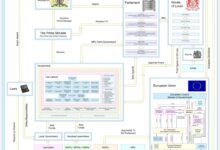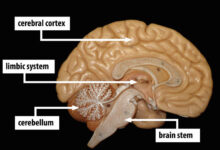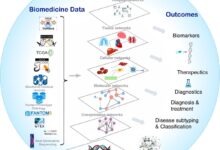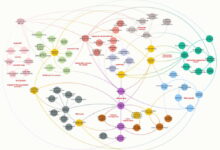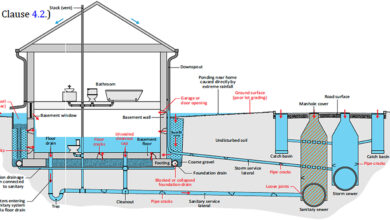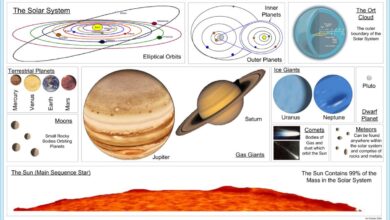System Analysis: 7 Powerful Steps to Master the Process
Ever wondered how complex software, business operations, or IT infrastructures are designed to work seamlessly? The secret lies in system analysis—a powerful, structured approach that uncovers problems, identifies needs, and paves the way for smarter solutions.
What Is System Analysis and Why It Matters

System analysis is a critical discipline used across industries to evaluate, understand, and improve systems—whether they’re technological, organizational, or procedural. At its core, system analysis involves breaking down a complex system into manageable components to study how they interact and contribute to overall functionality.
Defining System Analysis in Modern Context
System analysis is not just about technology. It’s a holistic process used to examine existing systems, identify inefficiencies, and propose improvements. According to the IEEE Computer Society, system analysis plays a foundational role in software engineering and systems design, ensuring that solutions meet both technical and business requirements.
- It involves gathering and interpreting data about system behavior.
- It focuses on understanding inputs, processes, outputs, and feedback loops.
- It supports decision-making in IT, business, healthcare, logistics, and more.
The Role of System Analysis in Problem Solving
One of the most powerful aspects of system analysis is its ability to transform vague problems into structured, solvable challenges. By mapping out workflows, data flows, and user interactions, analysts can pinpoint bottlenecks, redundancies, and risks.
“System analysis is the bridge between what is and what could be.” — Dr. James Martin, Systems Engineering Pioneer
This analytical mindset is essential in today’s fast-evolving digital landscape, where organizations must adapt quickly to changing demands.
The Core Principles of System Analysis
Effective system analysis doesn’t happen by accident. It follows a set of well-established principles that guide the entire process from start to finish. These principles ensure clarity, consistency, and alignment with organizational goals.
1. Holistic View of the System
A system is more than the sum of its parts. System analysis requires looking at the entire ecosystem—people, processes, technology, and data—rather than focusing on isolated components. This big-picture approach helps avoid unintended consequences when changes are made.
- Encourages cross-functional understanding.
- Reduces siloed thinking in organizations.
- Supports integration of new technologies with legacy systems.
2. User-Centered Design
At the heart of every successful system is the end-user. System analysis prioritizes user needs, behaviors, and pain points. Techniques like interviews, surveys, and usability testing are used to gather insights that shape system requirements.
For example, in healthcare IT, system analysis ensures that electronic medical record (EMR) systems are not only technically sound but also easy for doctors and nurses to use under pressure.
3. Data-Driven Decision Making
System analysis relies heavily on data. Whether it’s performance metrics, user feedback, or system logs, data provides the evidence needed to justify changes and measure success.
Tools like SWOT analysis (Strengths, Weaknesses, Opportunities, Threats) and cost-benefit analysis are commonly used during this phase to evaluate options objectively.
Key Phases in the System Analysis Process
System analysis is typically conducted in a series of structured phases. Each phase builds on the previous one, ensuring a logical flow from problem identification to solution design.
Phase 1: Problem Identification
This is where it all begins. Analysts work with stakeholders to define the problem or opportunity. Is the current system too slow? Are users making frequent errors? Is data being lost?
- Conduct stakeholder interviews.
- Review existing documentation and performance reports.
- Identify symptoms vs. root causes.
For instance, a retail company noticing declining sales might use system analysis to determine whether the issue lies in inventory management, customer experience, or marketing strategy.
Phase 2: Requirements Gathering
Once the problem is clear, the next step is to gather detailed requirements. This includes functional requirements (what the system should do) and non-functional requirements (how it should perform).
- Functional: “The system must allow users to reset passwords.”
- Non-functional: “The system must respond within 2 seconds under peak load.”
Techniques like use case modeling, user stories, and prototyping are often used to clarify expectations.
Phase 3: Feasibility Study
Not every solution is practical. A feasibility study evaluates whether a proposed system is technically, economically, and operationally viable.
- Technical feasibility: Do we have the technology and expertise?
- Economic feasibility: Will the benefits outweigh the costs?
- Operational feasibility: Will users accept and adopt the system?
This phase often involves creating a preliminary cost-benefit analysis and risk assessment.
Tools and Techniques Used in System Analysis
Modern system analysis leverages a wide range of tools and methodologies to model, analyze, and communicate system behavior. These tools help translate complex ideas into visual and actionable formats.
Data Flow Diagrams (DFDs)
DFDs are graphical representations that show how data moves through a system. They depict processes, data stores, external entities, and data flows.
- Level 0 DFD (Context Diagram) shows the system as a whole.
- Level 1 and 2 DFDs break it down into sub-processes.
DFDs are widely used in software development and business process modeling. You can learn more about DFDs at Visual Paradigm’s guide.
Unified Modeling Language (UML)
UML is a standardized modeling language used in software engineering. It includes various diagrams such as use case diagrams, class diagrams, and sequence diagrams.
- Use case diagrams show interactions between users and the system.
- Class diagrams represent the structure of a system in object-oriented terms.
- Sequence diagrams illustrate the order of interactions over time.
UML is essential for teams working on complex software systems, ensuring everyone shares a common understanding.
Prototyping and Wireframing
Before building a full system, analysts often create prototypes or wireframes to test ideas. These low-fidelity models allow stakeholders to visualize the system and provide feedback early.
Tools like Figma, Balsamiq, and Adobe XD are popular for creating interactive mockups. Prototyping reduces the risk of costly changes later in development.
System Analysis in Different Industries
While the core principles remain the same, the application of system analysis varies significantly across industries. Each sector has unique challenges and requirements that shape how analysis is conducted.
Information Technology (IT)
In IT, system analysis is central to software development, network design, and cybersecurity. Analysts evaluate existing systems, identify vulnerabilities, and design secure, scalable architectures.
- Analyzing database performance and optimizing queries.
- Designing cloud migration strategies.
- Ensuring compliance with security standards like ISO 27001.
For example, a system analyst might assess a company’s on-premise servers and recommend a move to AWS for better scalability and cost-efficiency.
Healthcare
In healthcare, system analysis improves patient care, streamlines operations, and ensures regulatory compliance. Electronic health records (EHR), telemedicine platforms, and hospital management systems all rely on thorough analysis.
- Reducing patient wait times through workflow optimization.
- Ensuring HIPAA compliance in data handling.
- Integrating medical devices with central systems.
A case study from the Office of the National Coordinator for Health IT shows how system analysis helped reduce medication errors by 40% in a large hospital network.
Finance and Banking
Banks and financial institutions use system analysis to enhance transaction processing, fraud detection, and customer service. With high volumes of sensitive data, reliability and security are paramount.
- Analyzing real-time transaction systems for latency issues.
- Designing AI-powered fraud detection algorithms.
- Improving mobile banking app usability.
System analysis also plays a key role in regulatory reporting and risk management frameworks.
Challenges in System Analysis and How to Overcome Them
Despite its benefits, system analysis is not without challenges. Analysts often face resistance, ambiguity, and technical constraints that can derail projects.
1. Incomplete or Conflicting Requirements
Stakeholders may have different expectations or fail to communicate their needs clearly. This leads to scope creep and project delays.
Solution: Use iterative requirement gathering techniques like Agile sprints. Conduct regular review sessions with stakeholders to validate assumptions and adjust priorities.
2. Resistance to Change
Employees may resist new systems due to fear of job loss, lack of training, or comfort with existing processes.
Solution: Involve users early in the analysis process. Provide training and change management support. Highlight benefits such as reduced workload and improved efficiency.
3. Integration with Legacy Systems
Many organizations still rely on outdated systems that are difficult to integrate with modern technologies.
Solution: Use middleware or API gateways to bridge old and new systems. Conduct a thorough impact analysis before making changes.
The Future of System Analysis: Trends and Innovations
As technology evolves, so does the field of system analysis. Emerging trends are reshaping how analysts work, making the process faster, smarter, and more predictive.
AI and Machine Learning in System Analysis
Artificial intelligence is transforming system analysis by automating data collection, pattern recognition, and predictive modeling. AI can analyze vast datasets to identify inefficiencies that humans might miss.
- Predictive analytics can forecast system failures before they occur.
- Natural language processing (NLP) helps extract requirements from unstructured text.
- Machine learning models optimize system performance in real time.
For example, Google’s SRE (Site Reliability Engineering) team uses AI to analyze system logs and predict outages.
Agile and DevOps Integration
Traditional waterfall models are giving way to Agile and DevOps practices, where system analysis is continuous rather than a one-time phase.
- Analysts work in cross-functional teams alongside developers and testers.
- Feedback loops are shorter, enabling rapid iteration.
- System analysis becomes an ongoing process embedded in CI/CD pipelines.
This shift requires analysts to be more collaborative and adaptable.
Cloud-Native System Analysis
With the rise of cloud computing, system analysis now includes evaluating cloud architectures, microservices, and serverless functions.
- Analyzing scalability and elasticity of cloud systems.
- Assessing cost models and resource utilization.
- Ensuring security and compliance in multi-cloud environments.
Tools like AWS CloudFormation and Terraform are increasingly used to model and analyze cloud infrastructure as code.
Best Practices for Effective System Analysis
To ensure success, system analysts should follow a set of proven best practices that enhance accuracy, collaboration, and impact.
1. Engage Stakeholders Early and Often
Stakeholder involvement is crucial. Regular communication helps align expectations and build trust. Use workshops, demos, and feedback sessions to keep everyone informed.
2. Document Everything
Clear documentation ensures that decisions, requirements, and designs are traceable. Use tools like Confluence or Notion to maintain a centralized knowledge base.
3. Validate Assumptions Continuously
Never assume anything is true without verification. Test hypotheses with real data and user feedback. Prototypes and pilot programs are excellent for validation.
4. Stay Updated with Industry Trends
The field of system analysis is constantly evolving. Subscribe to journals, attend conferences, and participate in professional communities like the Institute for Operations Research and the Management Sciences (INFORMS).
5. Use the Right Tools for the Job
Choose tools based on the project’s scale and complexity. For small projects, a simple spreadsheet might suffice. For enterprise systems, consider specialized software like IBM Rational or Microsoft Visio.
System Analysis vs. System Design: Understanding the Difference
While often used interchangeably, system analysis and system design are distinct phases in the systems development lifecycle (SDLC).
Focus of System Analysis
System analysis is about understanding the current system and defining what needs to be achieved. It answers questions like:
- What are the user requirements?
- What problems exist in the current system?
- What are the constraints and opportunities?
The output is a requirements specification document.
Focus of System Design
System design is about creating the solution—determining how the system will meet the requirements. It involves:
- Architectural design (e.g., client-server, microservices).
- Database design and schema creation.
- User interface and experience design.
The output is a technical design document used by developers.
“Analysis is about discovery; design is about creation.” — Barry Boehm, Software Engineering Researcher
Real-World Case Study: System Analysis in Action
To illustrate the power of system analysis, let’s look at a real-world example: the transformation of the New York City subway’s signaling system.
The Problem
The NYC subway, one of the oldest in the world, relied on a century-old mechanical signaling system. Trains had to maintain large distances between each other, leading to low capacity and frequent delays.
The Analysis Phase
A team of system analysts conducted a comprehensive study, including:
- Mapping current signal operations.
- Interviewing train operators and maintenance staff.
- Simulating traffic flow under different scenarios.
The analysis revealed that upgrading to a Communications-Based Train Control (CBTC) system could increase train frequency by 20%.
The Outcome
Based on the system analysis, the Metropolitan Transportation Authority (MTA) approved a multi-billion-dollar modernization project. Today, parts of the subway use CBTC, resulting in shorter wait times and improved reliability.
What does this teach us? Even in complex, legacy environments, thorough system analysis can drive transformative change.
How to Become a System Analyst: Skills and Career Path
System analysis is a rewarding career that blends technical expertise with problem-solving and communication skills.
Essential Skills for System Analysts
- Technical skills: Understanding of databases, networking, and software development.
- Analytical thinking: Ability to break down complex problems.
- Communication: Translating technical details for non-technical stakeholders.
- Project management: Coordinating timelines, resources, and deliverables.
Educational Background and Certifications
Most system analysts hold a bachelor’s degree in computer science, information systems, or engineering. Certifications like:
- Certified Systems Engineering Professional (CSEP)
- CompTIA Project+
- PMI-PBA (Professional in Business Analysis)
can enhance credibility and career prospects.
Career Growth Opportunities
With experience, system analysts can advance to roles such as:
- Senior Systems Analyst
- IT Project Manager
- Chief Technology Officer (CTO)
The demand for skilled analysts is growing, especially in fintech, healthcare, and AI-driven industries.
What is system analysis?
System analysis is the process of studying a system to understand its components, functions, and interactions in order to identify problems and design effective solutions.
What are the main steps in system analysis?
The main steps include problem identification, requirements gathering, feasibility study, modeling, and solution recommendation.
What tools are used in system analysis?
Common tools include Data Flow Diagrams (DFDs), Unified Modeling Language (UML), prototyping tools, and requirements management software.
How is system analysis used in software development?
In software development, system analysis helps define functional and non-functional requirements, model system behavior, and ensure the final product meets user needs.
Is system analysis the same as system design?
No. System analysis focuses on understanding the problem and defining requirements, while system design focuses on creating the technical solution to meet those requirements.
System analysis is a powerful, structured approach that bridges the gap between problems and solutions. From identifying inefficiencies to designing future-ready systems, it plays a vital role in technology, business, and society. By following best practices, leveraging modern tools, and staying adaptable, system analysts can drive innovation and deliver lasting value. Whether you’re a student, professional, or business leader, understanding system analysis empowers you to make smarter, data-driven decisions in an increasingly complex world.
Further Reading:
